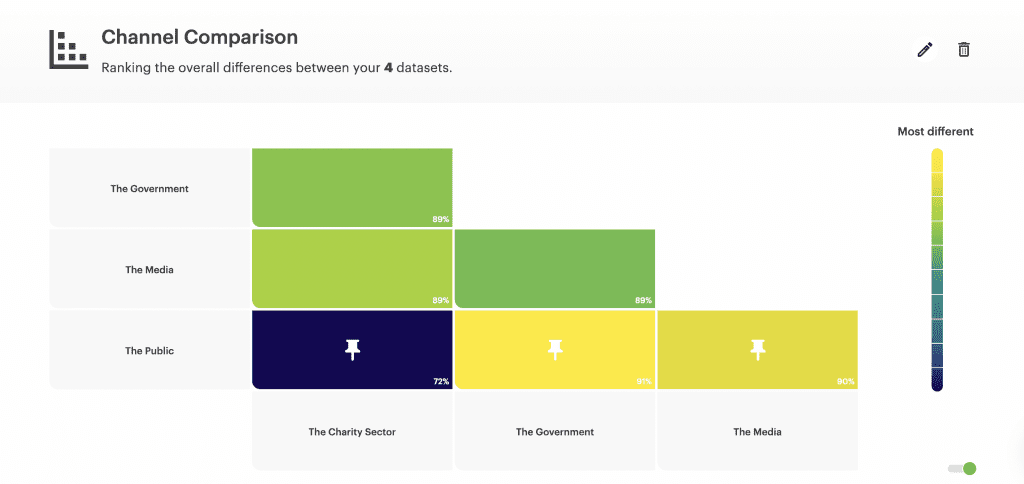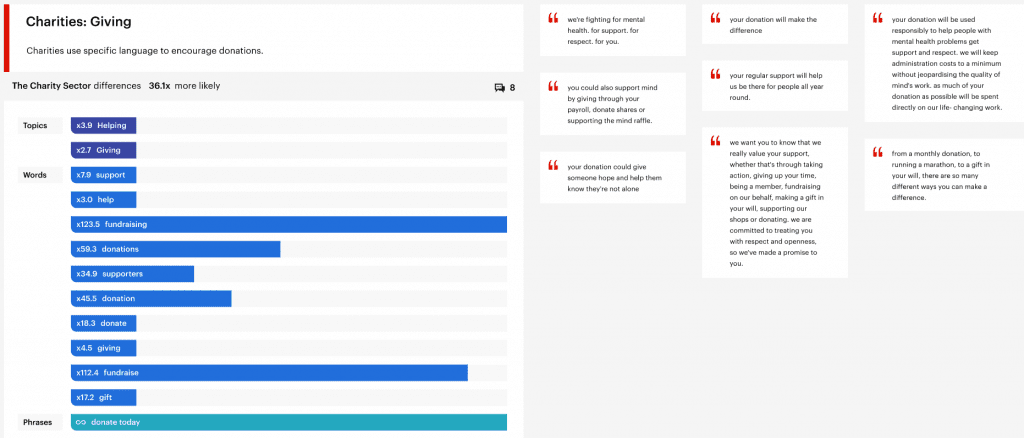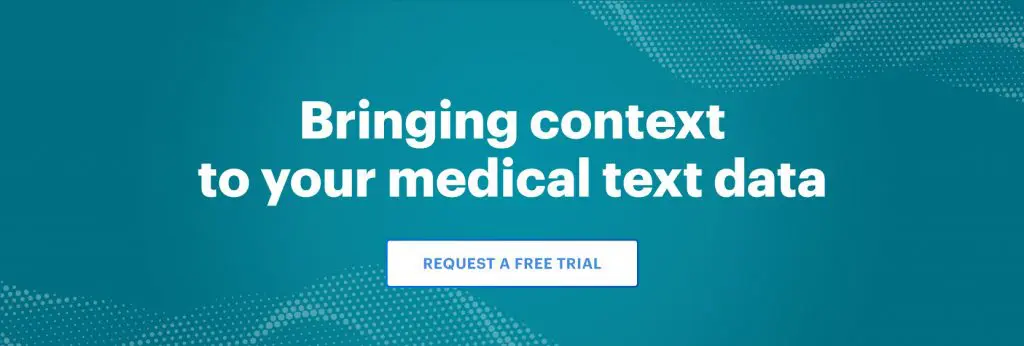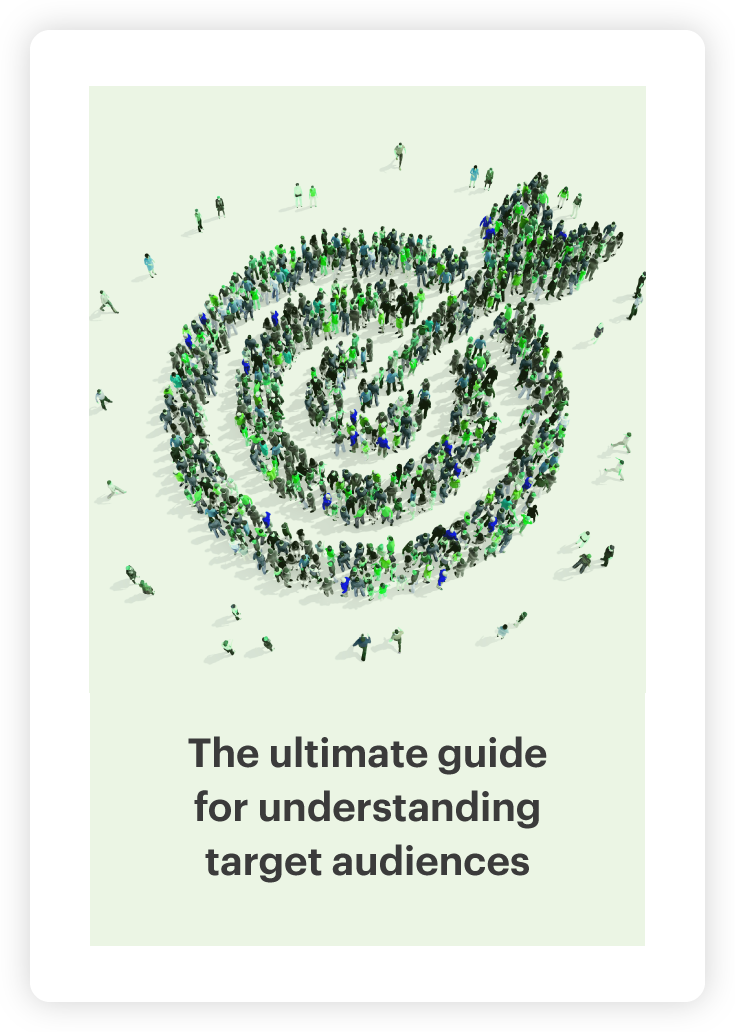How qualitative analysis in healthcare supports mental health and wellness

Mental health and wellness are undeniably trending topics of conversation. The recent surge of awareness and language around mental health has led to a large number of people being more open about their own struggles than ever before. It’s given rise to a world where, in the past decade alone, we have been able to witness a significant shift towards speaking up and openly about mental health. This increased level of discourse requires more in-depth qualitative analysis in healthcare.
To keep up to date with the changing mindset and vernacular, charities and brands are using Relative Insight to analyse the language around mental health, helping them to align their communications with a wider social discourse. Through sophisticated text analysis, charitable organisations and brands can gain a 360-degree understanding of the topic and create communications that are resonant with beneficiaries, donors and consumers.
We wanted to understand how organisations, charities, the government and the public approach mental health. Does the medium whereby mental health is discussed influence the language used?
The process
Using Relative Insight’s text analysis software, we compared millions of words from social media, forums, news articles, charity comms and government websites around the topic of mental health and wellness. This qualitative analysis in healthcare enabled us to discover the unique linguistic nuances in how different channels talk about a complex topic.
To find the most fascinating insights and areas of comparison, we used our heatmap functionality for pre-analysis. Heatmaps are a multi-comparison visualisation tool that shows which data sets in a group are most and least different.

In this example of qualitative analysis in healthcare, we can see that public discourse and charity communications are the least different, whereas the greatest divergence can be seen between the public and the government, and the public and the media. We therefore chose to explore these three comparisons further.
The Public vs The Government
The public
Our analysis identified eight different emotions present in public conversations on mental health, such as fear, shock, anger, dislike, sadness and happiness.

While this can be expected, what’s interesting is the increased use of honest and emotive language throughout the public conversation. The fact that the public discuss so many emotions in online forums suggests that the stigma around mental health is slowly but surely diminishing. It’s critical that brands and charities understand these emotions, in order to craft empathetic and resonant messaging.
The government
Unsurprisingly, the language used by the government to discuss mental health stands in stark contrast to the public scoring in the 91st difference percentile. This indicates that the comparison is more different than 91% of all comparisons.
Our analysis revealed that the government is more likely to speak about the logistics of implementing various mental health programmes, discussing things such as funding, training and ways to measure progress. Government communications are 77.4x more likely to refer to additional resources, guides and advice available to those suffering with mental health or wanting to learn more. While charity communications are targeted, the government’s tone is more generalised, with the aim of serving as many people as possible.

The Public vs The Media
The public
The rise of social media and online forums have enabled us to socialise with people outside of our immediate environments. Countless communities have formed across the world, encouraging people to speak up about their mental health struggles. Our qualitative healthcare analysis found that the public are using supportive language on these networks, such as understand, good luck, take care, feel better. People are no longer in the dark, making their experiences known and finding solace in others.

The media
The dialogue around mental health has met a significant shift over the past decade, with strides being taken to kick down the stigmas associated with it. The media is 2.7x more likely comment on this movement, using word such as trust, confident and openly when framing the narrative and reporting on stories around mental health.

Our analysis also found that the media coverage steers away from personal opinion on mental health when compared to public discourse. Rather, the media are 6.1x more likely to discuss research, studies and statistics. This adds weight and authority to news articles, highlighting the fact that extensive research is continuously being carried out in the mental health space.
The Public vs Charities
The public
As the conversation around mental health was the least different between the public and charity sector, we looked at the similarities between the two. An important insight we discovered was that both the public and charities address the subject of isolation and feeling alone when dealing with mental health issues. This demonstrates that charities understand the challenges associated with mental health and remain in tune with the real feelings of their beneficiaries.

Charities
Mental health charities exist to help those in need, giving them extra support, information and services. The analysis revealed that charities are 29.3x more likely to discuss facts, information and myths in comparison to the public. By adopting an educational tone, charities provide expert advice to those dealing with mental health issues or wanting to learn more.
In our analysis, a key difference which surfaced was that charities are 36.1x more likely to use language that elicits action such as donate, support, help, give, fundraise. Encouraging donations is crucial in the charity sector and using the right words can have a huge impact. In fact, research shows that by using the word support instead of submit, you can increase your donation rate by 16% per page view.

The value of qualitative analysis in healthcare
It’s no secret that the way we talk about mental health has made huge improvements in recent years. We’re sharing our personal stories online, breaking down stigmas and placing wellness at the centre of everything we do.
But the conversation is constantly evolving. Through qualitative healthcare analysis using our specialized medical text analysis platform, we can see what language is unique to each medium. By tracking how people talk on different channels, charities and brands can understand the changing discourse and create targeted messaging that aligns.

